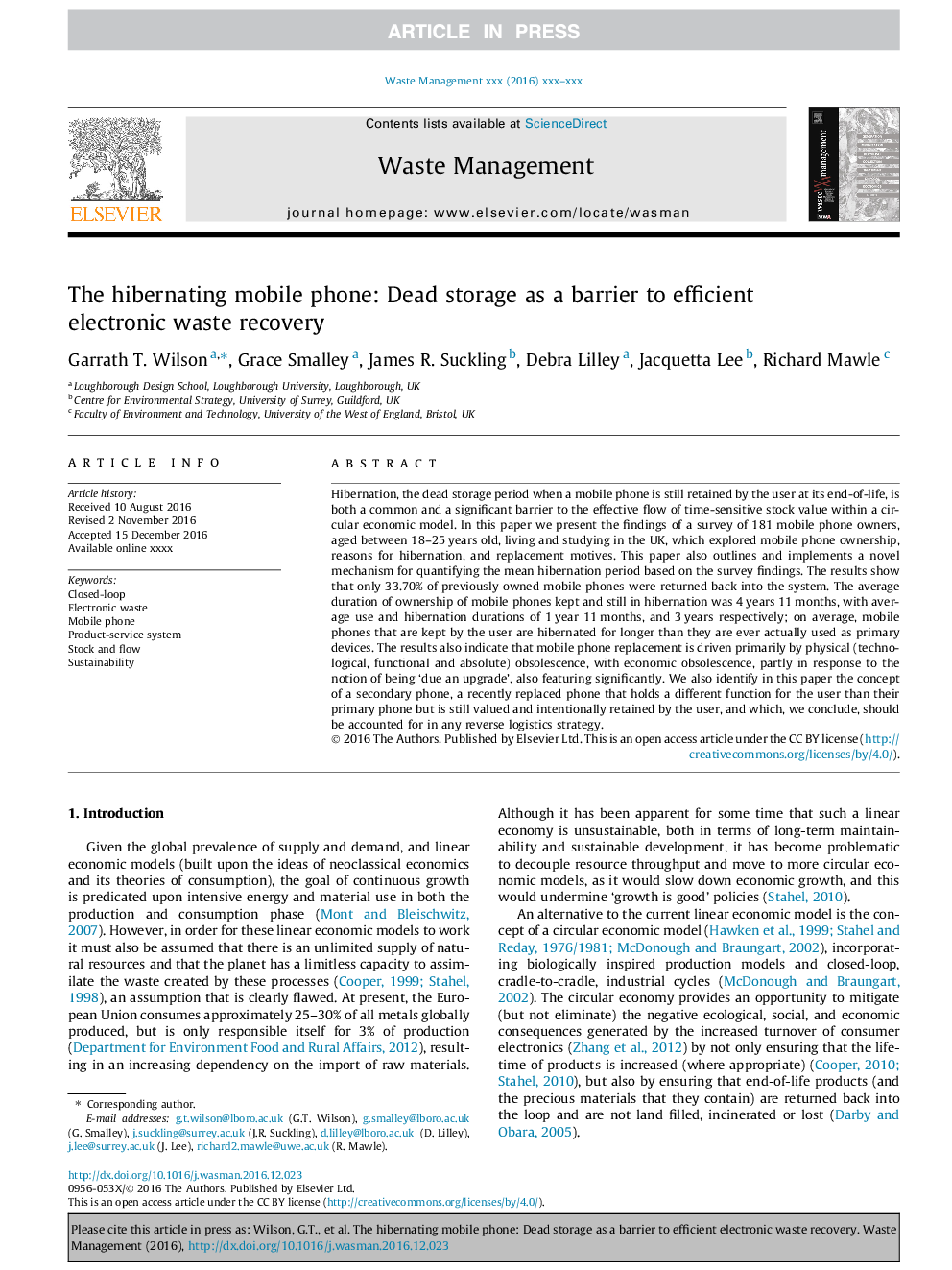| Article ID | Journal | Published Year | Pages | File Type |
|---|---|---|---|---|
| 5756812 | Waste Management | 2017 | 13 Pages |
Abstract
Hibernation, the dead storage period when a mobile phone is still retained by the user at its end-of-life, is both a common and a significant barrier to the effective flow of time-sensitive stock value within a circular economic model. In this paper we present the findings of a survey of 181 mobile phone owners, aged between 18-25Â years old, living and studying in the UK, which explored mobile phone ownership, reasons for hibernation, and replacement motives. This paper also outlines and implements a novel mechanism for quantifying the mean hibernation period based on the survey findings. The results show that only 33.70% of previously owned mobile phones were returned back into the system. The average duration of ownership of mobile phones kept and still in hibernation was 4Â years 11Â months, with average use and hibernation durations of 1Â year 11Â months, and 3Â years respectively; on average, mobile phones that are kept by the user are hibernated for longer than they are ever actually used as primary devices. The results also indicate that mobile phone replacement is driven primarily by physical (technological, functional and absolute) obsolescence, with economic obsolescence, partly in response to the notion of being 'due an upgrade', also featuring significantly. We also identify in this paper the concept of a secondary phone, a recently replaced phone that holds a different function for the user than their primary phone but is still valued and intentionally retained by the user, and which, we conclude, should be accounted for in any reverse logistics strategy.
Related Topics
Physical Sciences and Engineering
Earth and Planetary Sciences
Geotechnical Engineering and Engineering Geology
Authors
Garrath T. Wilson, Grace Smalley, James R. Suckling, Debra Lilley, Jacquetta Lee, Richard Mawle,
